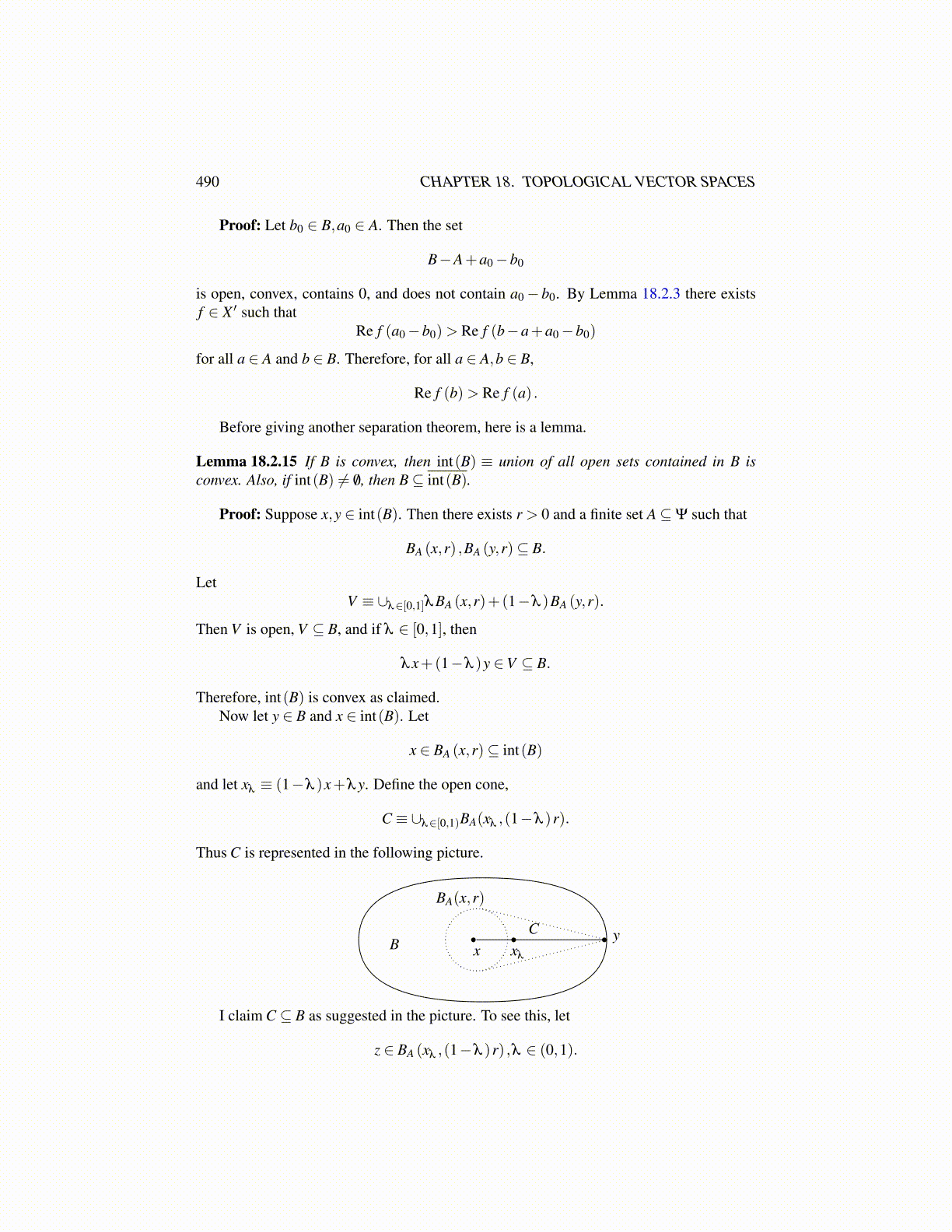
490 CHAPTER 18. TOPOLOGICAL VECTOR SPACES
Proof: Let b0 ∈ B,a0 ∈ A. Then the set
B−A+a0−b0
is open, convex, contains 0, and does not contain a0− b0. By Lemma 18.2.3 there existsf ∈ X ′ such that
Re f (a0−b0)> Re f (b−a+a0−b0)
for all a ∈ A and b ∈ B. Therefore, for all a ∈ A,b ∈ B,
Re f (b)> Re f (a) .
Before giving another separation theorem, here is a lemma.
Lemma 18.2.15 If B is convex, then int(B) ≡ union of all open sets contained in B isconvex. Also, if int(B) ̸= /0, then B⊆ int(B).
Proof: Suppose x,y ∈ int(B). Then there exists r > 0 and a finite set A⊆Ψ such that
BA (x,r) ,BA (y,r)⊆ B.
LetV ≡ ∪λ∈[0,1]λBA (x,r)+(1−λ )BA (y,r).
Then V is open, V ⊆ B, and if λ ∈ [0,1], then
λx+(1−λ )y ∈V ⊆ B.
Therefore, int(B) is convex as claimed.Now let y ∈ B and x ∈ int(B). Let
x ∈ BA (x,r)⊆ int(B)
and let xλ ≡ (1−λ )x+λy. Define the open cone,
C ≡ ∪λ∈[0,1)BA(xλ ,(1−λ )r).
Thus C is represented in the following picture.
BA(x,r)
yB xλ
Cx
I claim C ⊆ B as suggested in the picture. To see this, let
z ∈ BA (xλ ,(1−λ )r) ,λ ∈ (0,1).